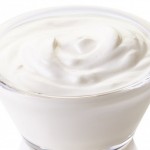The oats and yoghurt in these muffins give them a different texture and make them a great choice for breakfast or a snack!
We made ours festive with a mix of cinnamon, orange and cranberry but try fresh berries for a fruity twist, or simply use raisins instead of fresh fruit – delicious any way!
Skills Check
Follow a recipe; follow food safety & hygiene rules; tidy away; use measuring spoons; use a jug to measure liquids; use weighing scales; crack and egg; beat an egg; use a sieve; divide mixture into tins; use an oven with adult supervision.
Equipment
Muffin trays, Muffin cases, large bowl, small bowl weighing scales, sieve, measuring spoons, measuring jug, fork, spoon
Allergens*
Gluten |Milk | Eggs
*Please note the allergens listed are indicative only. Allergens vary depending on brand; check the labels on the products you use.
Ingredients (makes 12 muffins):
- 200g plain flour
- 1 ½ tsp baking powder
- 85g rolled oats
- 240 ml plain yogurt
- 1 tsp bicarbonate of soda
- 1 egg, lightly beaten
- 100g light soft brown sugar
- 110 ml semi-skimmed milk
- 90 ml vegetable oil
- 80g dried cranberries
- 1 tsp cinnamon
- Zest of 1 orange
Method
- Preheat the oven to 190C /Gas Mark 5-6 and prepare the muffin tins with muffin cases.
- In a large bowl, sift together the flour and baking powder. Set aside.
- In a second bowl stir together the oats, yogurt and bicarbonate of soda and let this mixture stand for a minute. Then, add the beaten egg,
sugar, milk and oil and carefully stir well. - Add the flour and stir well until just combined, adding the fruit and spices during the final strokes. The batter will be lumpy but no dry flour should be visible. Be careful not to overstir.
- Divide equally into the cases.
- Bake for 20-25 minutes until the tops are lightly browned and spring back when gently press.
- Allow the muffins to rest for 15 muffins before eating.
So thinking about winter warmer muffins ...

Fruit is generally low in fat and calories and high in fibre. Fruit offers an array of important vitamins and minerals, and also contains phytochemicals which help protect our bodies.
Cakes tend to be high in fat and sugar, although some types are worse than others. The Eatwell Guide says that if you are consuming food and drinks high in fat, salt and sugar we should have these less often and in small amounts.
Nutritional Information
| - | Energy | 928 KJ/221 kcal | 11% |
| Med | Fat | 9.5g | 14% |
| Med | Saturates | 1.3g | 7% |
| Med | Sugars | 11g | 12% |
| Med | Salt | 0.46g | 8% |
per 69g serving
% of an adult's reference intake
Typical values per 100g: Energy 1346kJ / 321kcal
Notes
A traffic light system is used on nutrition labels to make it easier to see which foods and drinks are lower in calories, fat, sugar and salt. Try and choose more ‘greens’ and ‘ambers’ and fewer ‘reds’, and stick to smaller portions of ‘reds’.
Just because a recipe or a food has a red traffic light doesn’t mean you shouldn’t eat it. Understanding why a food or recipe might have a red light can be helpful. For example oily fish is high in total fat and so any recipe containing oily fish is likely to be ‘red’ for fat. But it is recommended that we eat oily fish at least once a week because the type of fat it contains is beneficial for our health.
% Reference Intakes are also shown. Reference Intakes are guidelines about the approximate amount of particular nutrients and energy required for a healthy diet (based on an average-sized woman doing an average amount of physical activity). Most children will require less than these Reference Intakes. The contribution of one serving of a food or drink to the Reference Intake for each nutrient is expressed as a percentage.




